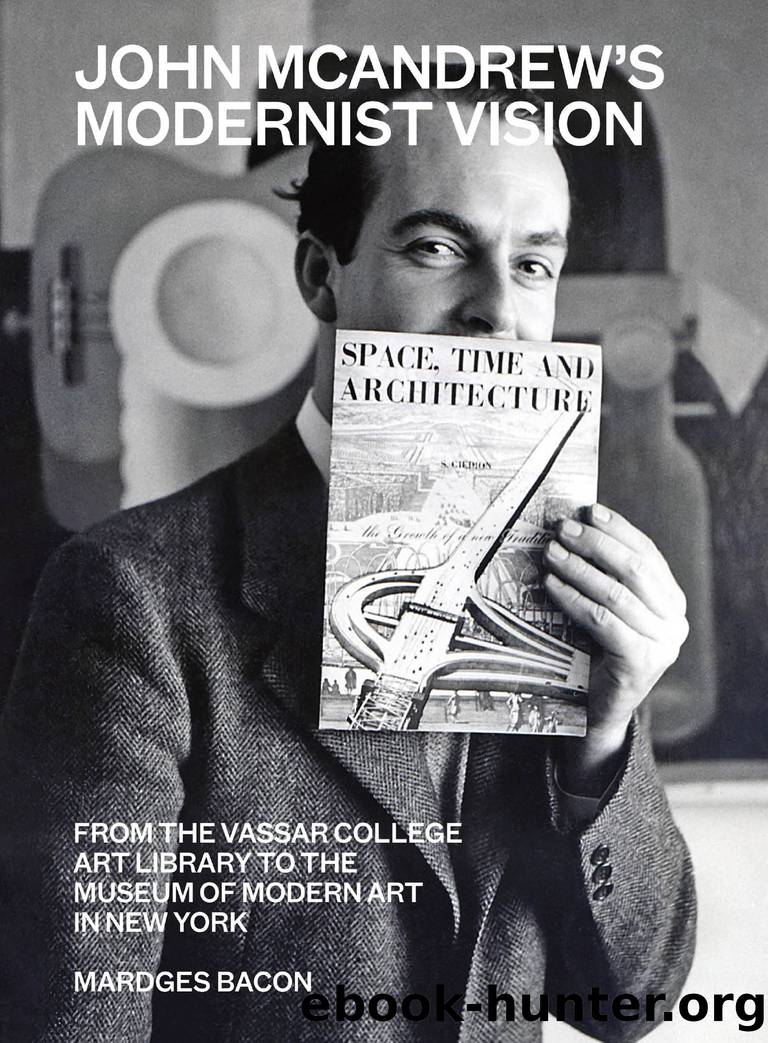John McAndrew's Modernist Vision by Mardges Bacon

Author:Mardges Bacon [Bacon, Mardges]
Language: eng
Format: epub
ISBN: 9781616897864
Publisher: Princeton Architectural Press
Published: 2018-08-15T00:00:00+00:00
Figure 3.1
Philip Goodwin and Edward Durell Stone. The Museum of Modern Art, New York, 1936â39 (Photograph Robert Damora © Damora Archive, all rights reserved)
III. CONSTRUCTING A âNATURALIZEDâ MODERNISM AT THE MUSEUM OF MODERN ART
CURATORSHIP
When John McAndrew stepped into his new position in July 1937 as curator of Architecture and Industrial Art at the Museum of Modern Art, he pursued his vision of modernism through a more public platform.1 But the museumâs job offer had been completely unexpected. As McAndrew later recalled, he had been invited to give lectures at the Institute of Fine Arts in New York that spring.2 Unbeknownst to him, it was a chance to be âlooked overâ by the architect and MoMA trustee Philip L. Goodwin and others at the museum.3 McAndrew already knew Alfred Barr well, having spent the summer of 1935 in Rome with him and his wife, Margaret (Daisy); they had also traveled together to Williamsburg, Virginia, in the spring of 1936, as discussed in Chapter Two. McAndrew speculated that he might have been brought in as a kind of sounding board for Barr, whose method of âthinking and working,â he believed, involved talking to other people.4 Joining the museum reunited him with a core group of Harvard modernists. His appointment, Russell Lynes later observed, âkept the Sachs-Barr-Abbott-Hitchcock-Johnson line . . . unbroken.â5 If McAndrew was engaged as Barrâs agent, he would not remain in that capacity for long; he soon asserted his persona and framed his own views on modernism as curator and designer. Nonetheless, throughout his tenure at MoMA, he would remain Barrâs mentee.
McAndrewâs leadership of the Department of Architecture from 1937 to mid-1941 brought stability to a period of shifting curatorships. Since 1930 its exhibitions had been dominated by the curatorial direction of Philip Johnson (and Henry-Russell Hitchcock from outside the institution).6 Although Johnson had left his position as chairman of the Department of Architecture in late 1934 to pursue the right-wing politics of Huey Long, by the spring of 1935 he had returned home to Ohio, from where he informally directed the Le Corbusier exhibition at MoMA that summer under the curatorship of Ernestine Fantl, who assumed the leadership of the Department of Architecture and Industrial Art as curator the following year.7 In 1935 and 1936 the department sponsored a number of ambitious exhibitions, most notably one assembled and supervised by Hitchcock on the architecture of Henry Hobson Richardson, accompanied by his monograph on the architectâs work.8 But Fantlâs tenure was short lived.9 By the time McAndrew was on board, Barr was already planning a major Bauhaus exhibition.
McAndrewâs arrival also occurred at a critical juncture in the history of the museum. In the fall of 1937 Philip Goodwin and Edward Durell Stone were in the throes of designing a new headquarters on West Fifty-Third Street.10 Barr, who had wanted a European modernist to design the building and had held out for Ludwig Mies van der Rohe, was not consulted in the final decision.11 Instead, it was made by Stephen C.
Download
This site does not store any files on its server. We only index and link to content provided by other sites. Please contact the content providers to delete copyright contents if any and email us, we'll remove relevant links or contents immediately.
Kathy Andrews Collection by Kathy Andrews(11676)
The remains of the day by Kazuo Ishiguro(8738)
Paper Towns by Green John(5022)
Spare by Prince Harry The Duke of Sussex(4993)
The Body: A Guide for Occupants by Bill Bryson(4881)
Industrial Automation from Scratch: A hands-on guide to using sensors, actuators, PLCs, HMIs, and SCADA to automate industrial processes by Olushola Akande(4840)
Machine Learning at Scale with H2O by Gregory Keys | David Whiting(3962)
Be in a Treehouse by Pete Nelson(3875)
Harry Potter and the Goblet Of Fire by J.K. Rowling(3736)
Never by Ken Follett(3701)
Goodbye Paradise(3665)
Into Thin Air by Jon Krakauer(3261)
The Remains of the Day by Kazuo Ishiguro(3253)
The Cellar by Natasha Preston(3218)
The Genius of Japanese Carpentry by Azby Brown(3188)
Fairy Tale by Stephen King(3155)
120 Days of Sodom by Marquis de Sade(3115)
Drawing Shortcuts: Developing Quick Drawing Skills Using Today's Technology by Leggitt Jim(2960)
The Man Who Died Twice by Richard Osman(2953)
